by Nebula Haze
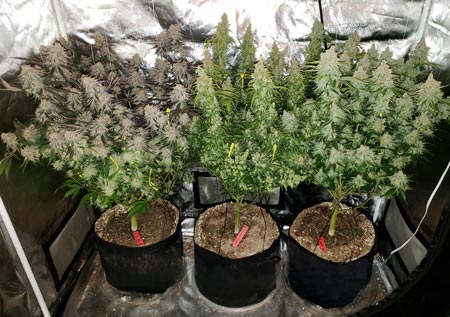
11/3/2023 - This Page Under Construction
This article was originally written in 2020. Check back soon for a massively updated page that is current with the latest LED grow light technology.
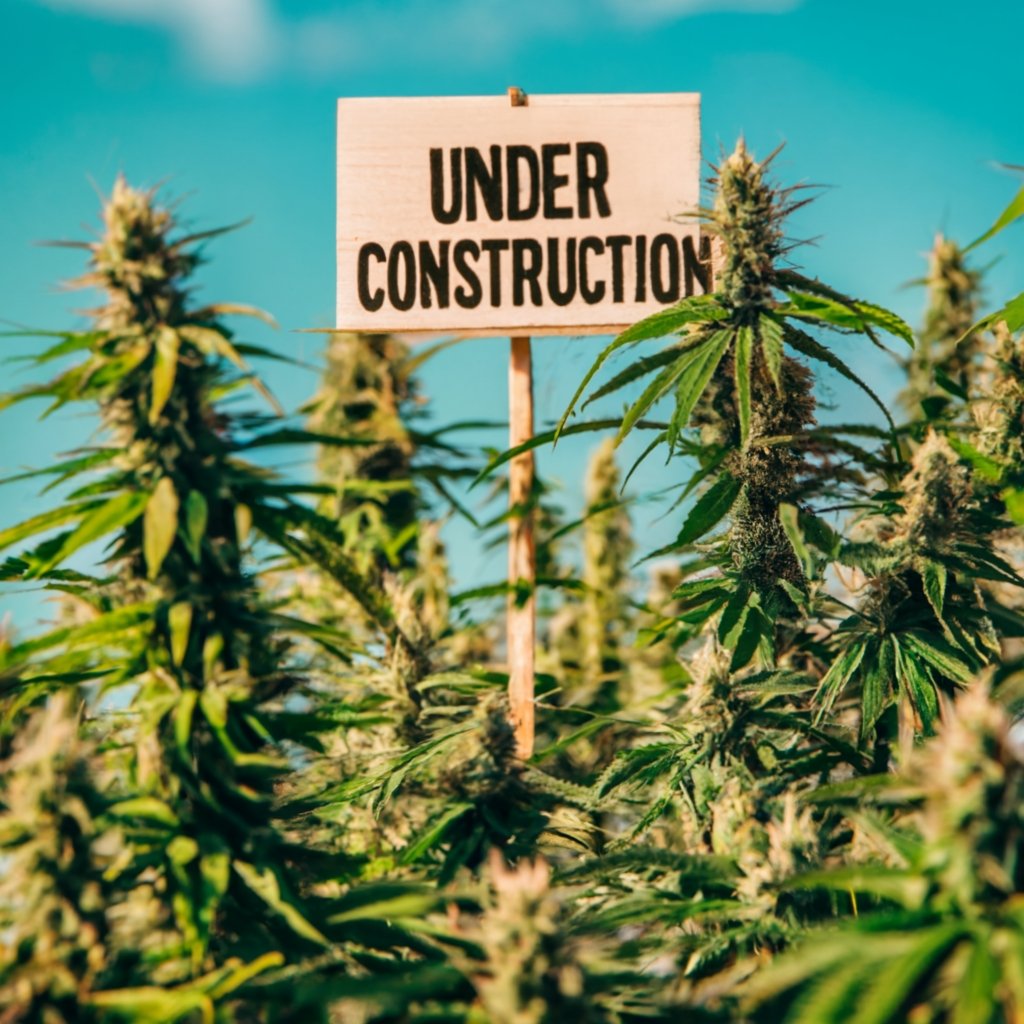
Table of Contents
Introduction - LEDs yield 0.5 to 2g/watt of electricity (average 0.5-1g for beginners)
3 Main Types of LEDs
- Recommended: Spread Style (Ex: Quantum Board, Rack, or Spider)
- Traditional Panel
- Compact Style (COBs)
Read more: How To Connect Two LED Strip Lights: Installation Guide
Trusted LED Grow Light Companies for Growing Cannabis
Recommended LEDs for Growing Weed - I have personally tested these LED models on growing marijuana plants.
- Spider Farmer
- Mars Hydro
- HLG (Horticulture Lighting Group)
Other Popular LED Brands for Growing Weed
- ViparSpectra
- Kind LEDs
- Phlizon
- Vivosun
Read more: How To Connect LED Strip Lights Together
More About Growing with LEDs
- LEDs vs Other Cannabis Grow Lights
- How to Use LEDs
- How to Avoid Problems with LEDs
Introduction: Are LEDs a Good Choice for Growing Cannabis?
LED grow lights are relatively new to the cannabis growing scene, but they have become wildly popular over the last few years with their ability to produce great yields while staying cool and using a reasonable amount of electricity.
Yields! With a quality LED grow light and an average-to-good grow, you can expect yields of about 0.5 to 1g/watt.
The final yield depends a lot on strain and grow skill, as well as the quality of the lamp itself, but that’s a good rule of thumb for most models. For example, a 200W LED (200W true power draw, not an “equivalent” wattage) would yield about 100-200 grams on average, or 3.5 to 7 ounces.
Today’s LED models are much better for growing cannabis than the ones available even a few years ago. Many modern lamps are full spectrum or “wideband” spectrum (instead of only red and blue light diodes, which produce a bluish-purple light and are sometimes called “blurples”). Full spectrum light is easier on the eyes, and adding at least some amount of green light to blurples typically results in healthier growth. Other spectrum colors like red, far red, and infrared are important for the budding/flowering stage. LED manufacturers have developed specialized lenses to point light directly to the plants and increase penetration, resulting in bigger yields for the same amount of light compared to older models. There are also many different form factors, with everything from the casing to the size of the diodes varying from model to model.
Modern LED grow lights can produce impressive results. These cannabis plants were grown completely under LED grow lights from seed to harvest!
Read more: How to Connect LED Lights Together: A Simple Guide
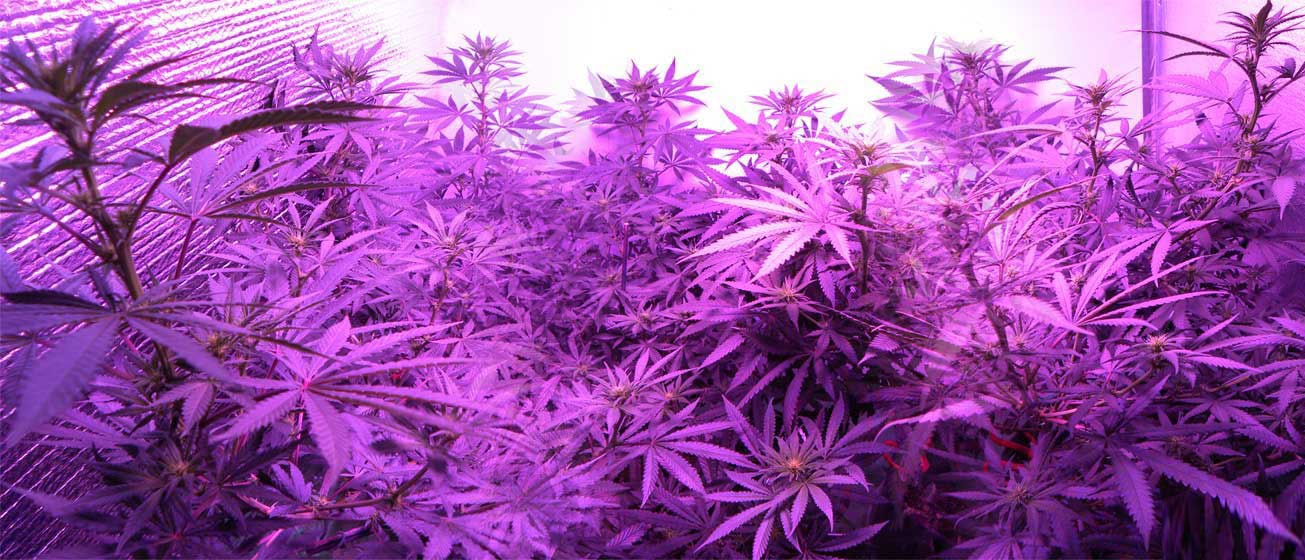
3 Main Types of LED Grow Lights
There are 3 main types of LEDs that are most commonly used for growing cannabis. Each type of model has its pros and cons, so there isn’t yet a “best” LED type. Some are better for some situations than others.
1.) Spread Style (Ex: Quantum Board, Rack, or Spider)
Many smaller LEDs are spread out over a large area. Examples of this style include Quantum Boards, Rack, and “Spider style” LED grow lights.
Quantum Board
The name “Quantum Board LED grow light” originated from Horticulture Lighting Group, though the term is now sometimes used for any LED in this style. They tend to have relatively low wattage diodes that are spread out over a large area on a board. These are becoming more popular lately and seem to offer particularly good results for the amount of wattage used.
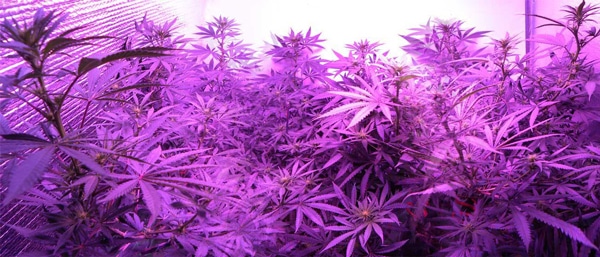
Spider LED
The “spider style” LEDs are similar to Quantum Boards in that the individual diodes are spread out and tend to be on the smaller side, but they are set on a panel with “arms” like a spider as opposed to a solid board. One very popular example is the SPYDRx line of LED lights. These typically have an extremely high price, but growers who use them swear they get better results than any other type of LED grow light.

2.) Traditional Panel
The standard panel LEDs have small to medium wattage diodes, and the lamps tend to be more compact. Most LED grow lights available today are in this style. They are sort of halfway between a Quantum Board and a COB Style light, with a mix of features from both.
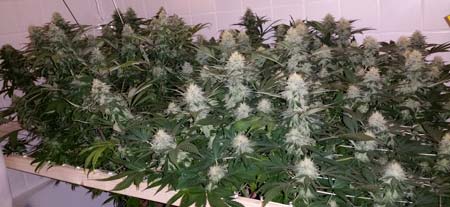
I’m also seeing lots of new “hybrid” LED grow lights appearing, that contain a mix of big and little LEDs, and unique form factors that mix and match between all the styles.
3.) Compact Style (COBs)
These grow lights use huge COB (Chip on Board) LED “bulbs”. Each COB is incredibly bright and intense because they contain multiple LED chips in a small area. COBs produce more intense light than other types of LEDs, and each COB uses a significant amount of electricity. Cree is the most popular brand of COBs.
Instead of having dozens of small diodes, COB style LED grow lights typically only have a handful of huge COBs, each with strong lenses to direct the light down into the plant. These are rapidly gaining in popularity and are known for having deep penetration into the plant canopy.
AutoCOBs
It’s also common to see LED grow lights that only have one COB per lamp. These make it easy to spread out your light over a grow area, one lamp at a time. Sometimes known as “AutoCOBs”.
Some LED grow lights have a single COB LED. Multiple units can be spread out as needed.
Each COB has its spectrum, so you can create a custom spectrum for your plants by combining multiple AutoCOBs together. They are very configurable if you have an unusually shaped grow space or want to be able to accommodate different plants of different sizes at the same time.
Some COB LED grow lights can be plugged into regular light sockets.
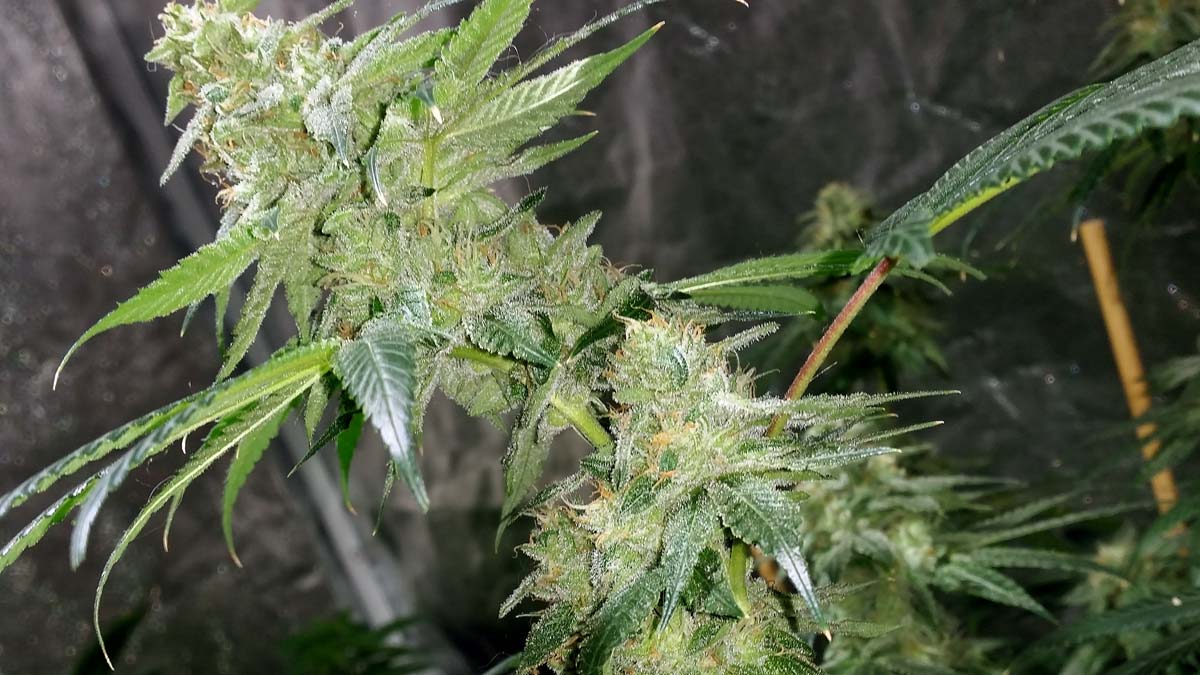
Now that you have a basic understanding of the different types of LEDs, let's talk about using them for growing cannabis.
LEDs are often compared to HPS grow lights, and each type of grow light has pros and cons for cannabis growers. Here’s a quick summary to help you decide whether LEDs are a good fit for you, and you can also read more deeply into the differences between LED and HPS here.
Choose LED grow lights if…
- You want to use the most cutting-edge indoor cannabis grow lights with a customized spectrum of light
- You are willing to do some research to determine the best LED grow light for your space (this article will help guide you)
- You have some extra money to spend on your initial setup (some of the best LED grow lights have a high initial cost)
- You don’t want to deal with an exhaust system or ducting and would prefer to just hang your grow light over your cannabis plants and let the lights cool themselves
- Quality (potency, smell, trichome development) and ease of use are important to you
Which LED Grow Light Brands Can Be Trusted?
This is a very short list and is not meant to be comprehensive. There are hundreds if not thousands of brands of LED grow lights, and a lot of them are great, but I’m only listing brands that I personally know for certain will work well for growing cannabis. These LED grow lights have actually been tested and given the seal of approval by real cannabis growers.
Get breakdowns of their best models for growing cannabis:
- ViparSpectra -
- HLG (Horticulture Lighting Group) - Recommended
- Electric Sky (Green Sunshine Company) - Recommended
- Advanced Platinum Grow Lights
- Kind LED Grow Lights
ViparSpectra LED Grow Lights
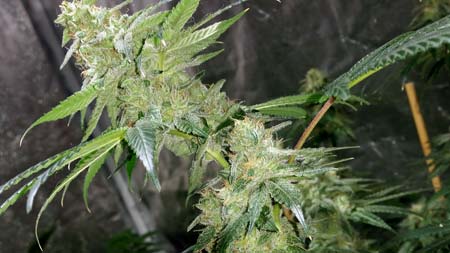
In our growing forum, many members have experimented with different grow lights for growing cannabis. Over the last few months, it has become apparent that one of the most popular brands for LED grow lights is an emerging company known as “ViparSpectra.”
I hadn’t heard of them until relatively recently (it seemingly started becoming very popular around late 2016 or early 2017).
Since growers are getting such great results with these lights, and they come at surprisingly reasonable prices for LED grow lights, I knew I needed to highlight this company as our most recommended LED grow light!
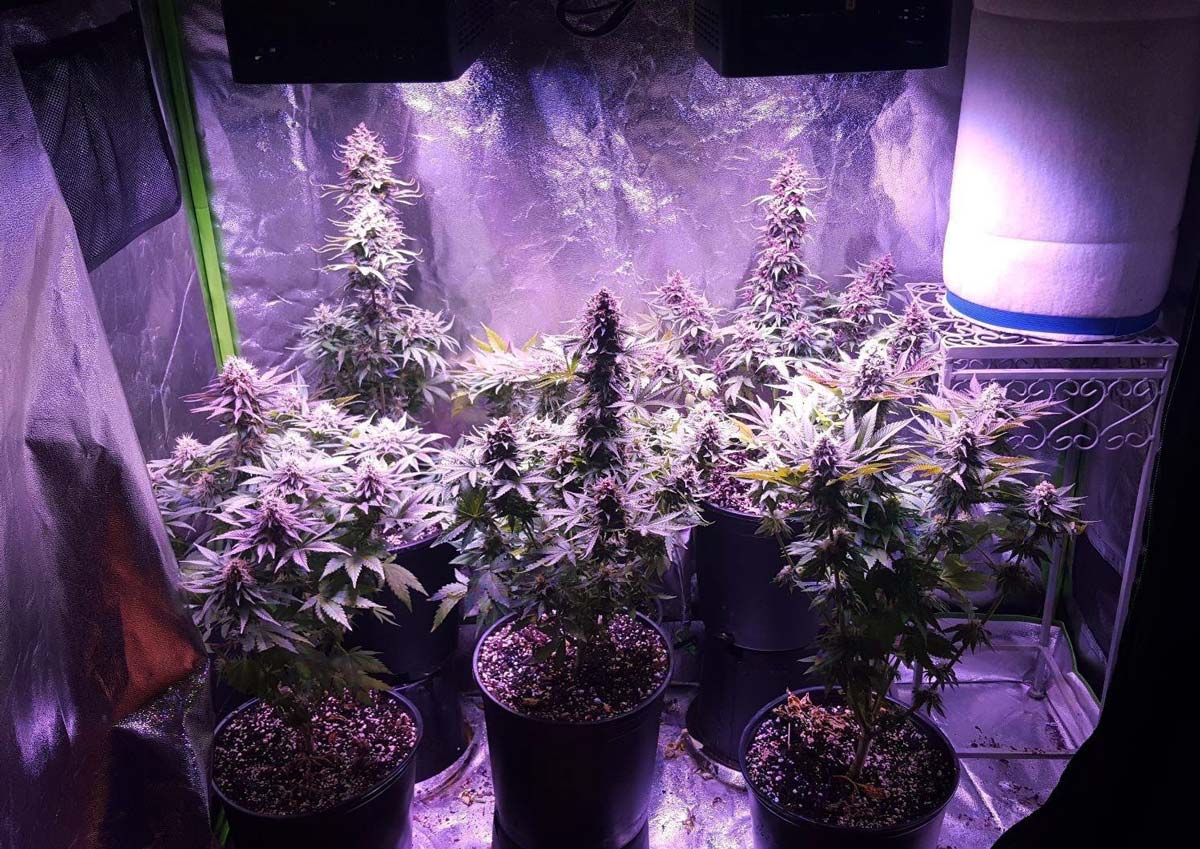
I will be adding more pictures of real cannabis plants growing under these lights soon, to help you know what to expect. Keep checking back!
Breakdown of Different ViparSpectra LED Models:
Here is a breakdown of their different models. This list doesn’t include all their models, just the ones that seem to be performing the best. We omitted a few that just don’t seem as good as the others for some reason (as one example, the pro version of the 1200W seems to be getting some bad reviews based on its light footprint, despite the fact that all the other models in the series perform very well).
Recommended ViparSpectra Models:
- “450W” - 200W actual wattage
- “450W” (pro series) - 210W actual wattage <- great choice for first-time growers!
- “600W” - 274W actual wattage
- “700W” (pro series) - 326W actual wattage <- good mid-size
- “1200W” - 524W actual wattage<- for advanced growers only
Note: Unlike a lot of other brands, ViparSpectra LED grow lights have both a heatsink and built-in fans to help keep grow lights cool.

Horticulture Lighting Group (HLG) LED Grow Lights
HLG first coined the term “Quantum Board” for an LED grow light with the diodes spread out over a large area (on a board). The board style LED grow lights have become very popular almost as soon as they appeared on the scene. Growers are reporting results that may beat even other LED grow lights when it comes to the amount of yield for the electricity used. I was impressed when I tried one myself. It’s probably too early to call it the winner just yet, but it’s undeniable these are some of the best LED grow lights available today!
Breakdown of Most Popular HLG LED Models:
HLG 65 V2 Quantum Board (all versions work well from seed to harvest)
- Price: $99
- Grow Space: 2' x 2'
- Actual Power Consumption: 65W
- How Far to Keep from Plants: 10-12" away
- Average Yields: 2-3+ ounces
HLG 100 V2 Quantum Board (3000k version recommended from seed to harvest)
- Price: $149
- Grow Space: 2'x2'
- Actual Power Consumption: 95W
- How Far to Keep from Plants: 12-14" away
- Average Yields: 3.5-5+ ounces
HLG 300L Quantum Board (R-Spec version recommended)
- Price: $450
- Grow Space: Up to 4' x 4' in the vegetative stage. It’s listed to cover between 2.5' x 2.5' to 3' x 3' in the flowering stage, but the rectangular shape actually makes it perfect for a 2’x4’ grow tent.
- Actual Power Consumption: 270W at full power, and can be dimmed down to 90W for younger plants

